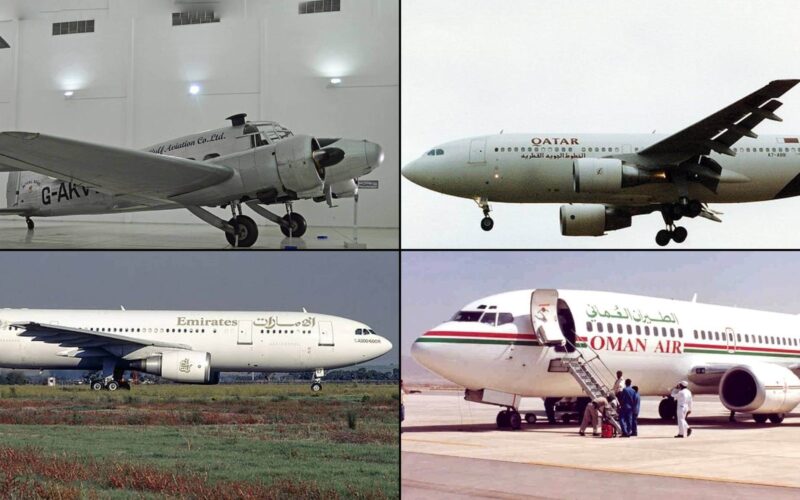Gulf airlines are some of the most well-known in the world. Positioned at the intersection of the busiest global routes, certain airlines in the region have taken over millennia-long traditions of forging a connection between Africa, Europe and Asia. However, other carriers have focused on the local market and found great success.
But how did it all start? AeroTime takes a look at the history of aviation in the Gulf and explores the first airplanes to be flown in the region. Where are those magnificent machines now?
Saudia
Is Saudia a Gulf airline? Well, as one of the key members of the Gulf Council (organization’s headquarters are located in Riyadh), Saudi Arabia is certainly considered a Gulf country. Nevertheless, the airline is based in Jeddah, situated on the shores of the Red Sea and the opposite side of the Arabian Peninsula to the Persian Gulf.
Location aside, Saudia is, in fact, the oldest airline in the region. The airline was established in 1945, which makes it either the second or the third in the Middle East, depending on how we categorize Turkish Airlines.
The carrier’s first aircraft is integral to its history. In 1945, a Douglas DC-3 (ex-military C-47 Dakota) was given to King Ibn Saud by the president of the US, Franklin D. Roosevelt. Subsequently, it became the first airplane operated by the newly established carrier, Saudi Arabian Airlines. A few more DC-3s were purchased shortly after.
The original aircraft, registered as HZ-AAX, flew with the airline until the 1970s. While many Saudia DC-3s met their fate in crashes or were eventually scrapped, HZ-AAX survived and, restored to its original bare aluminum livery, is now displayed at Riyadh’s Royal Saudi Air Force Museum. The registration number was changed to SA-R-1 though, which has prompted some speculation that the aircraft is a replica.
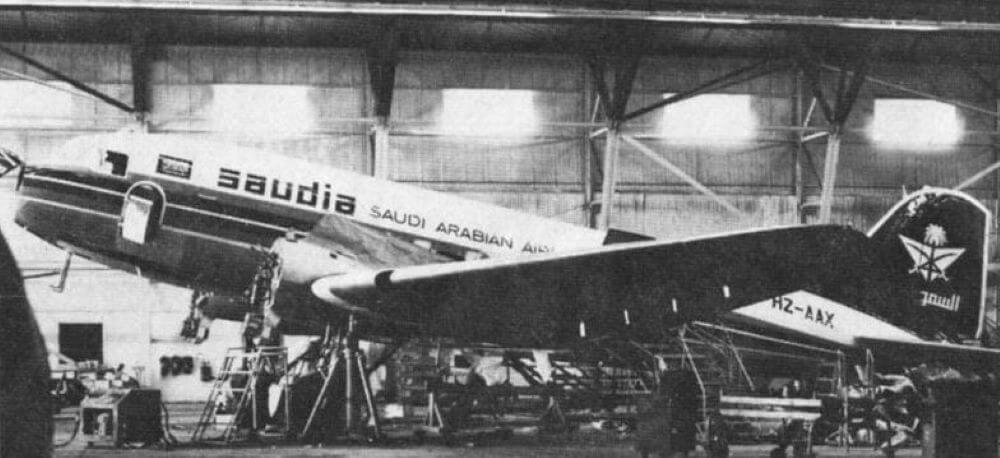
The HZ-AXX back in the 70s. (Image: Aviadejavu.ru)
Gulf Air
If we decide to discount Saudia as a Gulf airline, the title of oldest airline in the region is given to Bahrain’s Gulf Air, which was established in 1950 as Gulf Aviation.
The carrier began flying two brand-new Avro Ansons (five more were added at a later date) and one old De Havilland DH.86B Express biplane. But some sources say there were initially three such aircraft.
In 1951, the DH.86B was damaged and subsequently written off. However, the fate of the Ansons is, unfortunately, unknown. In the span of two years the aircraft were replaced by De Havilland Doves and may well have been scrapped.
Nonetheless, a well-preserved Avro Anson with Gulf Aviation livery can be found in the Al Mahatta Museum in Sharjah, with the registration number G-AKVW. But it is an ex-RAF Anson, restored in the 1980s and displayed to cosplay one of Gulf Air’s oldest aircraft. Another Anson, the G-VROE (one of the few such aircraft in airworthy condition), was invited to Bahrain in 2000 and was briefly repainted as Gulf Aviation’s G-AIWX. So, despite the loss of the company’s original aircraft, their history is not forgotten.
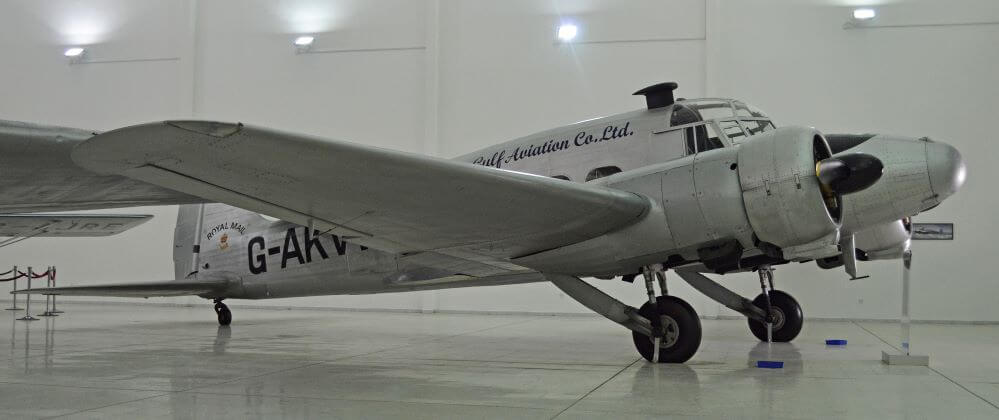
Avro Anson in Gulf Aviation livery at Al Mahatta Aviation Museum (Image: Alan Wilson / Wikipedia)
Kuwait Airways
Like many other airlines, Kuwait’s flag carrier started with Douglas DC-3s. In 1953, two aircraft of this type were bought for the newly established Kuwait National Airways, which commenced operations in 1954. Registered as G-AMZZ and G-AMSM, they were sold in 1970. The G-AMSM found its way into the line-up of British airline, Skyways Cargo, and flew well until 1978 when it experienced a particularly hard and fiery landing at Lydd International Airport (LYX).
The second, G-AMZZ, is a bit harder to trace. Bought by another airline and taken off-grid, the aircraft did not resurface again. But it is quite likely that the G-AMZZ did not survive, otherwise we would be privy to more information about its whereabouts.
Unable to purchase its two historic aircraft, but still not wishing to forget its roots, Kuwait purchased an ex-USAF DC-3 (C-47) in 2008, which had been found decaying slowly in Florida. After some restoration, the aircraft was put on display in the Kuwait Science and Natural History Museum in Safat.
Emirates
What was Emirates’ first aircraft?
Well, there are actually two ways to look at the question.
The first flights by the newly established airline were conducted in 1985, using an Airbus A300B4-200 (reg. AP-BBM) and a Boeing 737-300 (reg. AP-BCD) wet-leased from Pakistan International Airlines. They were returned to the original owner in 1987 and 1988, respectively. The A300 was scrapped at Karachi airport in 2005. The 737 was retired in 2013 and delivered to Sharjah airport (SHJ) in UAE. Satellite photos taken in 2021 indicated that a hulk of decaying 737 still sits on the outskirts of SHJ. Could it be the same airplane that conducted Emirates’ much-publicized first flight? It may well be.
On the other hand, the first aircraft owned by Emirates were Boeing 727-200s. Two of those were transferred from the Dubai Royal Air Wing and flew with the airline until 1995 before they were eventually sold. Both aircraft still operate with Kalitta Charters, an American charter company and were airborne on the day this article was written.
So, could Emirates track and purchase at least one of the aforementioned aircraft for restoration and display? It is possible. And with the airline’s 40th anniversary set to take place in just a few years, it seems as good a chance as any. Fingers crossed.
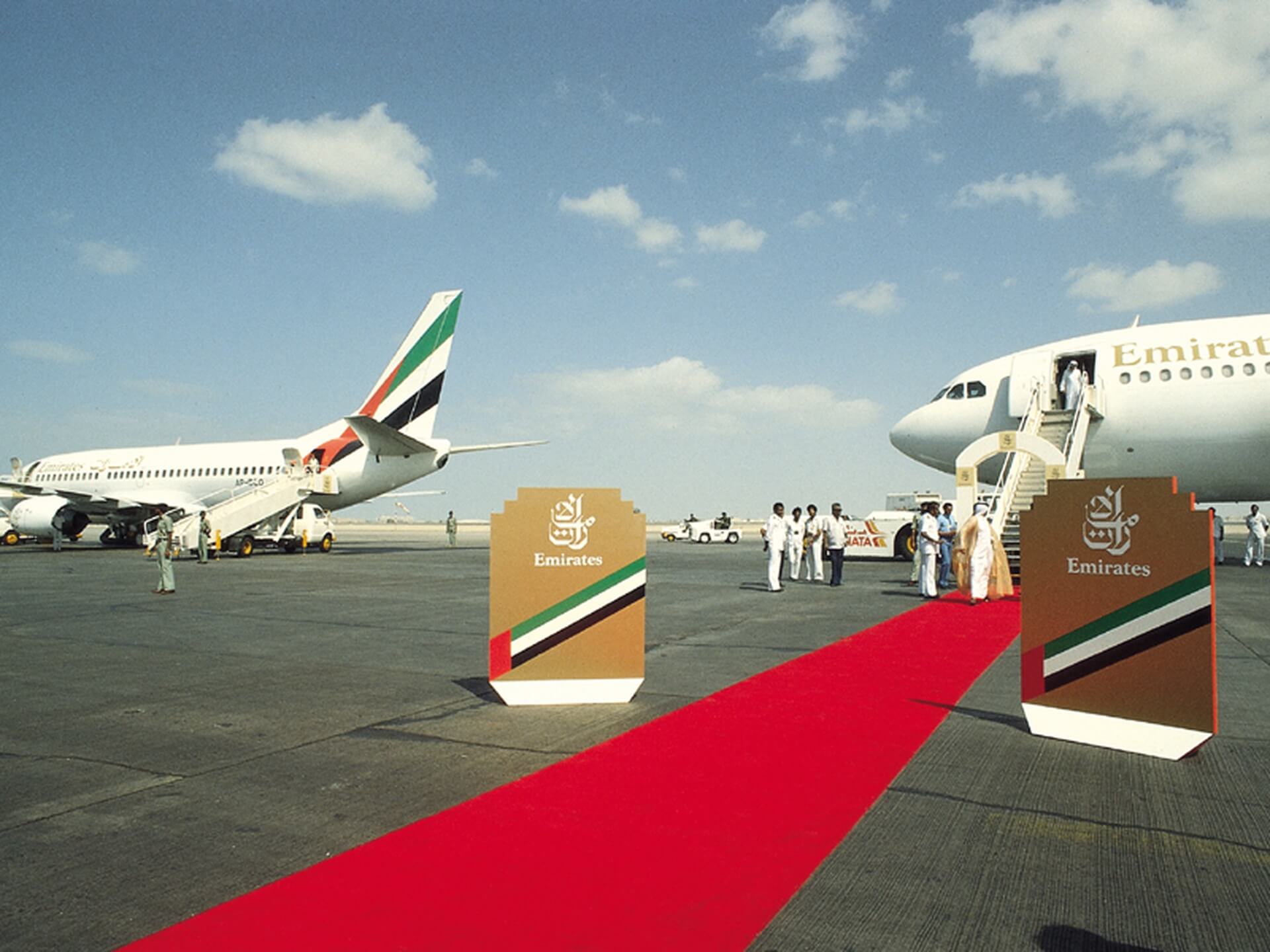 Emirates inaugural flight. Boeing 737-300 on the left, Airbus A300 on the right. (Image: Emirates)
Emirates inaugural flight. Boeing 737-300 on the left, Airbus A300 on the right. (Image: Emirates)
Oman Air
The company can trace its origins back to ground handling services, Oman International Services (OIS), at the now-defunct Beit Al Falaj Airport in the 1970s. In 1981, the company merged with Gulf Air’s light aircraft division to form Oman Aviation Services (OAS).
Four Fokker F-27-600s dating back to the 1960s were transferred and began operations on regional routes. In the span of two years, each one was sold to make room for larger F-27-500s. The original aircraft continued to change hands for a number of years. One crashed in Hannover Airport (HAJ) in 1988 and a further three were scrapped in the 1990s.
However, both OIS and OAS are often considered to be the forerunners of Oman Air, but not acknowledged as earlier iterations of the same airline. The company was founded in earnest in 1993 on the basis of previous efforts and, after a major revamp, kick-started the second generation of Gulf carriers.
Much like Emirates, Oman Air’s early fleet was wet-leased in its entirety. The first flight was conducted using a Boeing 737-300 from Irish leasing company, Ansett Worldwide, registered as VH-OAM. It flew with Oman Air until 1995, when the carrier retired the aircraft in favor of several second-hand Airbus A320s.
The aircraft was then leased in Europe and Africa, before ending up in the hands of Venezuelan airline, Aerolineas Estelar, which still carries its livery to this day. According to Radarbox.com, the last flight was conducted in July 2019 and it appears that the plane has remained in storage ever since.
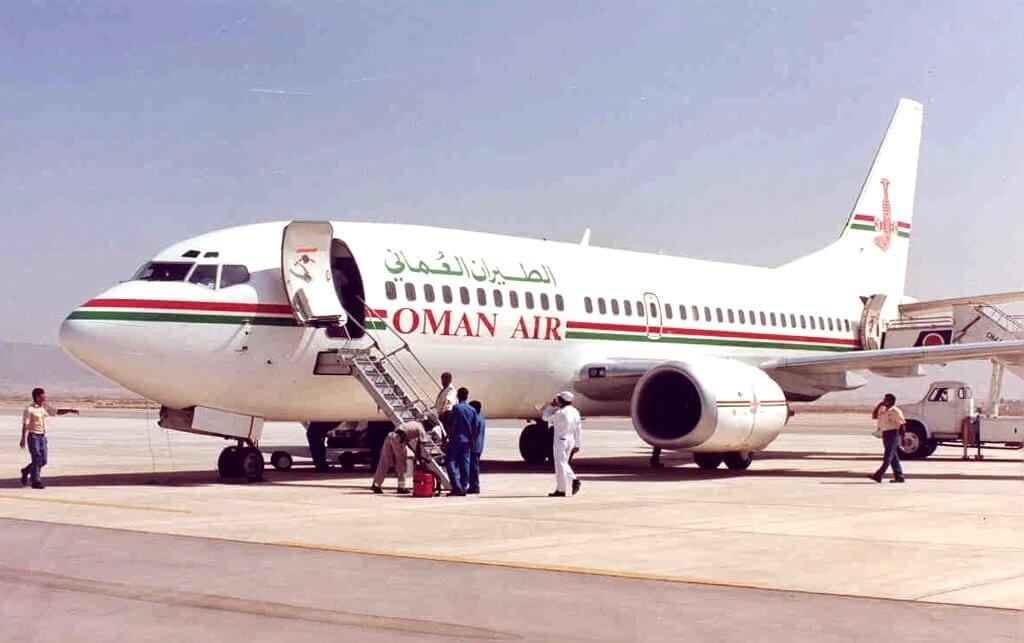
Oman Air Boeing 737-300 in the 90s (Image: Oman Air / Twitter)
Qatar Airways
Qatar Airways was established in the last months of 1993 and began operations in January 1994, using two ex-Kuwait Airways Airbus A310-200s, which were both almost a decade old.
A year later, the airline acquired two newer Boeing 747SRs and the A310s had to go. One was reacquired by Airbus and sold to Armenian Airlines, only to be scrapped at Bremen Lemwerder (XLW) in 2002. But another experienced a more interesting destiny, eventually finding its way into the fleet of FedEx and being converted into a freighter.
FedEx used the airplane until 2016 before putting it into long-term storage at Victorville Airport (VCV), California. It remains there to this day, standing among a dozen Fedex aircraft. Its fate remains undecided.
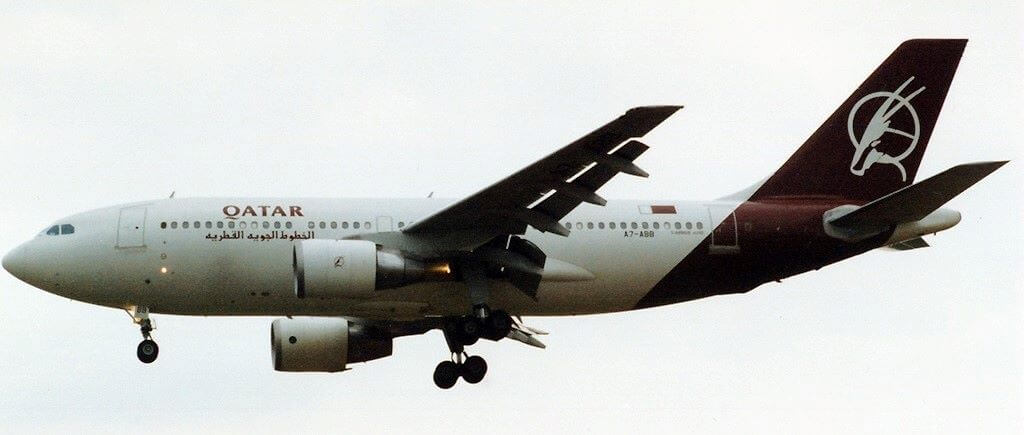
One of the original Qatar Airways Airbus A310-200, in their 90s livery (Image: Torsten Maiwald / Wikipedia)
Air Arabia
The first low-cost airline in the Middle East was established in 2003 and became a success almost immediately. It operated three brand-new Airbus A320-200s for the first year of its service, before expanding to include other aircraft of the same family.
All three aircraft were sold in 2011 and remain operational with other carriers. Ural airlines still uses two for regular flights within the European part of Russia, while the third has been utilised by charter company, Nouvelair Tunisie, to carry flocks of European tourists to Tunisia and back again.
Etihad Airways
For decades, Abu Dhabi, along with the region’s other city-states, owned a part of Gulf Air. But, one after another, the partners broke away to establish their own airlines. After witnessing the success of Bahrain and Oman, Abu Dhabi decided to follow suit.
UAE already had a successful carrier in Emirates but, since Sheikh Ahmed bin Saif Al Nahyan was keen to invest a lot of his own money into the venture, there were no problems with trying something new. So, Etihad Airways was established in 2003. On November 1, the airline received two Airbus A330-200s from TAM and, on November 5, one completed the inaugural flight.
Three years later, as Etihad began receiving Boeing 777s as part of its first $8 billion dollar order, the A330s were returned to TAM and continued to fly for the Brazilian airline. Both were eventually retired in 2013 and scrapped in 2017. Some of those 777s still fly with the airline, though, as a result of delays with their replacement, the troubled 777X.
Jazeera Airways
The first Kuwaiti non-governmental airline, Jazeera Airways, was established in 2004. The carrier began operations in 2005 after receiving its first brand-new Airbus A320-200, which were leased from Sahaab Leasing. Since then, Jazeera has stuck with the type and received two dozen additional A320s before switching to the vastly updated A320neo in 2018.
The very first aircraft, registered 9K-CAA, was sold to Olympus Leasing in 2013 and, under the new registration VP-CXN, was operated by Flynas. Its last flight took place in February 2021 and the aircraft remains parked at Sharajah Airport (SHJ).
Which brings us to…
Flynas
Two budget carriers, Sama Airlines and Nas Air, were founded in Saudi Arabia in 2007. Sama’s two Boeing 737-300s were returned to the lessor after the airline was closed. They are, as of mid-2021, operated by Boliviana de Aviacion.
Nas Air fared better. Over the years, the carrier operated a large and colorful fleet, which included various aircraft. The first was an Airbus A320, registered as EC-ISI. Shortly afterwards, the name of the airline was changed to Flynas. The aircraft was sold and, currently, it is operated by another low-coster, Spanish Volotea.
Flydubai
In 2008, Dubai also decided to jump on the low-cost bandwagon and established its own budget airline. After receiving a couple of newly-built Boeing 737-800s, the airline commenced operations in June 2009.
Since then, Flydubai switched to 737 MAX and began phasing out the 800s. The initial batch was sold to Corendon group and distributed among its companies, with Flydubai’s very first aircraft, an A6-FDA, also going to Corendon Airlines. Unfortunately, the aircraft met its fate in 2012, when a fire broke out in its cockpit while taxiing at Antalya Airport (AYT). Several passengers were injured and the aircraft was written off as a result.
The second 737-800 ended up with Corendon Dutch Airlines and continues to perform scheduled flights in Europe.
SaudiGulf Airlines
The history of the newest airlines is, unsurprisingly, quite short. SaudiGulf Airlines was established in 2013 and, despite receiving two Airbus A320s in 2015, had to wait for another year to start service.
Both of the initial aircraft are still operational and have not changed hands.
SalamAir
SalamAir, an Omani low-cost carrier, was founded in 2016. It started operations with five LATAM’s Airbus A320-200s in 2017 and got rid of all of them in 2019 and 2020 in favour of new A320neos. Three of the five aircraft were returned to LATAM, while the other two are, as of mid-2021, owned by FlyOne and Corendon Airlines.
However, the aircraft have not seen much use since the start of the COVID-19 pandemic.

